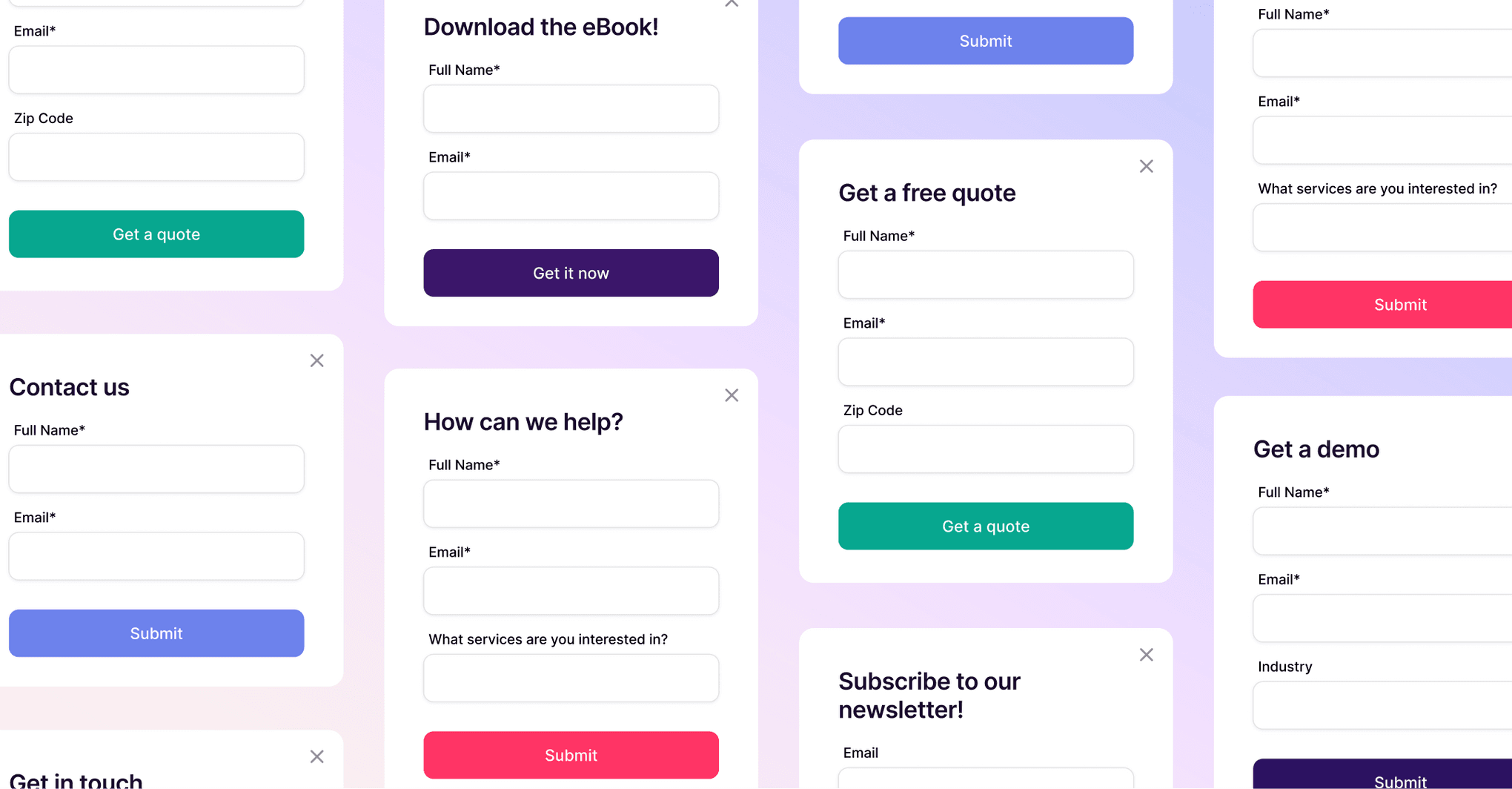Jemicah Marasigan
Content Marketing Manager
If your to-do list is starting to resemble the credits of a Marvel movie (endless), and you’re bouncing between social media, email campaigns, onboarding, product updates, and 37 other things that all feel “kind of urgent” — it’s time for an intervention.
Here’s the truth: doing everything means doing nothing well.
At this stage, it’s not about proving you can do it all — it’s about scaling what works. A strong business focus strategy helps you cut through the noise, prioritize the work that actually drives results, and create more breathing room to grow — not just bigger, but better.
Why you should just focus on a few things
As a growing business, it’s natural to want to seize every opportunity that comes your way. A client asks if you can add social strategy to your scope? You say yes. Someone suggests running webinars, cold emails, and podcast ads at the same time? Let’s go!
But there’s a difference between being adaptable and trying to do everything all at once.
Here’s what actually happens when you stretch too wide:
Your team constantly context-switches, slowing down creative output
Some clients get white-glove service while others get a templated version
You lose sight of which efforts are truly profitable
Progress feels slow — even when everyone’s “busy”
Of course, being a generalist isn't a problem. In fact, many of the most successful agencies and consulting teams offer a range of services. The key difference? They’re focused on how they deliver, sell, and scale those services.
You don’t need to niche down if that’s not your model — but you do need to operate with focus. That could mean:
Building dedicated systems around a few high-demand services
Refining the client onboarding process
Being selective about which projects or clients align with your goals
Mapping your marketing efforts to what actually converts
Because focus isn’t about shrinking your ambition. It’s about scaling what works.
When you commit to a focused strategy, you give yourself space to:
Align your leadership team
Resource high-impact work
Say no (strategically) to distractions
Build real momentum across the business
Focus sharpens your execution. And great execution — not just big ideas — is what fuels sustainable growth.
How to prioritize your business tasks (without the spreadsheet spiral)
Let’s make this easy. You don’t need a 9-step prioritization matrix to start getting focused. Use this three-part filter to decide what deserves your time and energy:
1. Fit: Is this aligned with your audience and strengths?
Ask yourself: Is this where our ideal clients spend time, and is this something we’re known for doing well?
If you’re a B2B content shop crushing it on referrals and LinkedIn, do you really need to dive into TikTok ads? Not now.
2. Capacity: Can you execute this with excellence today?
Stretching your team too thin is a fast way to stall progress. Just because you can take on something doesn’t mean you should — at least not right now.
Make decisions that protect your delivery quality and internal momentum.
3. Stage: Does this make sense for where your business is right now?
At this point, you’re not just trying to get leads in the door — you’re thinking about how to grow smarter.
That might mean tightening your ops, improving client retention, or finally tackling that onboarding workflow that’s been duct-taped together for too long.
The goal is to focus on what makes sense for your current stage, not what worked two years ago (or what your competitor’s doing). Just because something’s a good idea doesn’t mean it’s the right idea right now.
And when it comes to deciding which clients are actually worth pursuing? You can apply the same thinking.
If you want to take it a step further, you can always set up a Client Fit Score in Copper CRM. This ranking system helps you quickly identify which leads are actually worth your time based on budget, engagement, industry, or whatever matters most to your business.
A roadmap for staying focused
Let’s say you’ve picked your big three things you want to focus on: refining your service positioning, improving your onboarding experience, and deepening your content marketing strategy.
Get the latest from our blog every month
Now what? Follow the 3 T’s.
1. Trim
Take a hard look at your calendar, task list, and internal workflows. What’s dragging your team’s time and energy without showing real results?
For example:
Still running that monthly webinar that no one registers for? Archive it.
Posting daily on five different social channels, even though 80% of your leads come from two? Focus on the latter.
Spinning up proposals for clients who rarely convert? Create a pre-qualifying step.
Trim the nice-to-haves to protect the must-dos. It’s not about saying something was a bad idea — it’s just not the priority right now. This clears the way for your best work to breathe and grow.
2. Test
Trying something new doesn’t mean overhauling your business. It means starting small.
Let’s say you’re thinking about a new service package. Before building a landing page, a full deck, and pricing model — test it in a sales call. Float it to a few current clients. See if it sticks.
Other examples:
Want to try LinkedIn ads? Run a $500 pilot first.
Thinking about switching your project management tool? Test it on one team (Although, we hear Copper helps keep your CRM and PM all in one place…)
Curious about video content? Make one unscripted walkthrough, not a five-part series.
Testing helps you stay nimble, learn fast, and avoid wasting time and resources on things that don’t pay off.
3. Track
It’s easy to fall into the “we’re too busy to measure” trap — but if you don’t track, you can’t improve.
Here’s what tracking looks like in real life:
Set up a weekly 15-minute team huddle to check in on your top 3 priorities
Use your CRM dashboard to keep an eye on things like new qualified leads, deals moving through the pipeline, or how long it’s taking to onboard new clients
Watch for signs of bottlenecks or distractions — like stalled projects or team time getting pulled into the wrong places
You don’t need a massive data strategy. You just need consistent visibility. And this is where the right tools (like Copper) become a force multiplier — showing you what’s working, what’s stuck, and what to do next.
It’s important to make your priorities visible — company-wide
One of the biggest killers of focus? Everyone on the team having a different idea of what matters most.
Even if leadership is aligned on your “big three,” that clarity can get lost fast once you zoom out to client teams, marketing, ops, or sales. And as your agency continues to scale, so does the risk of misalignment.
The fix? Make your top priorities impossible to miss.
Here’s how:
Start every weekly team meeting with a 30-second refresh of your 3 focus areas
Pin them in your project management tool, Slack channel, or internal wiki
Set up a shared CRM dashboard showing progress against those focus areas
Tie internal goals, client work, and KPIs back to your focus areas during 1:1s and check-ins
This isn’t about corporate-style OKRs. It’s about making sure every team member understands, “This is what we’re working on right now — and here’s why.”
Because the best strategy in the world doesn’t work if no one can see it — or if your tools can’t support it.
How a CRM reinforces your focus — and how Copper helps you scale faster
The truth is, focus isn’t just a mindset — it’s a system. And systems need the right tools behind them. As your team scales, you can’t rely on memory, spreadsheets, or Slack threads to stay aligned and on track.
That’s where a CRM (like Copper) becomes your operational backbone. Here’s how:
1. It keeps your pipelines simple — and smart
Copper’s flexible, customizable Pipelines let you track your deals, clients, or projects in a way that fits your unique workflow. Whether you’re running a creative agency or a strategy consultancy, you can build Pipelines that reflect how you actually work.
And as leads or clients move through those stages? You can trigger automated emails — follow-ups, next steps, reminders — all without lifting a finger. That’s time saved and consistency delivered.
2. It captures and qualifies leads automatically
Copper lets you embed forms directly on your website, so every new inquiry goes straight into your CRM. You can sort and tag them automatically, filter out unqualified leads, and route high-intent ones to your team fast.
No more messy spreadsheets or manual sorting — just a clean system that keeps your pipeline healthy.
3. It integrates everything you already use
If your day lives in Gmail, Google Calendar, and Google Docs — Copper was truly designed with you in mind. Built to seamlessly integrate with your Google Workspace, you can:
Log emails automatically
Attach Docs and Sheets to contacts, leads, or deals
Set follow-up reminders straight from your calendar
See CRM activity without ever leaving your inbox
It’s not just convenient, it keeps your team focused, organized, and one step ahead without bouncing between tabs.
And when you need more? Copper connects with hundreds of tools you already use, like Slack, Mailchimp, QuickBooks, and beyond. So your workflows stay centralized, your data stays synced, and your team stays out of “Where’s that file?” territory.
Focus is a leadership skill
You don’t need to be everywhere. You don’t need to do 10 things halfway. You just need a clear business focus strategy, the courage to act on it, and the systems to support it.
Focusing on three things — deeply and consistently — is how you go from busy to effective. From reactive to strategic. From stuck to scaling.
So pick your three. Say no to the rest. Use tools that support the way you work.
And watch how fast everything changes.
Want a CRM that helps you focus, scale, and simplify? Copper was built for teams like yours — agencies, consultants, and creative brands who want to grow without drowning in complexity. Why not give it a try for 14 days free?






